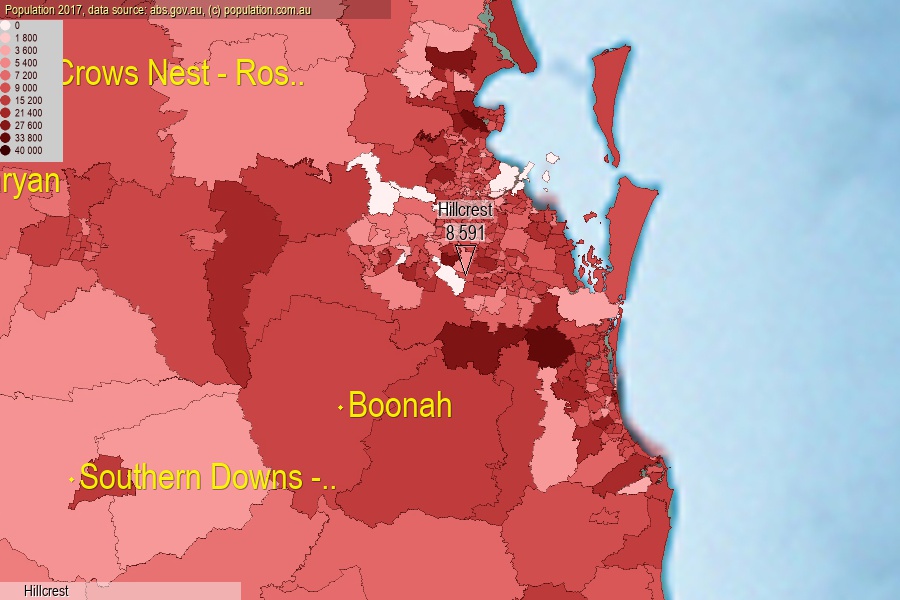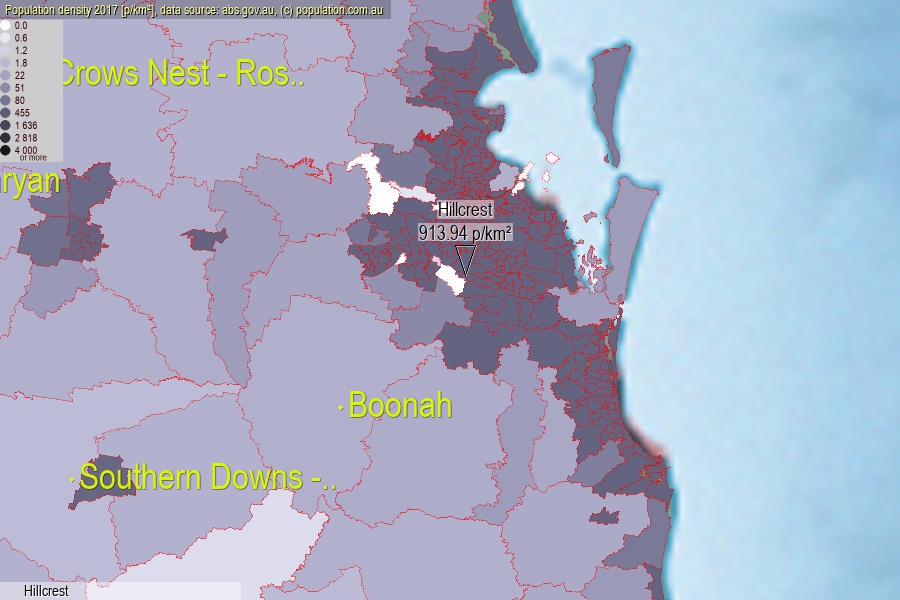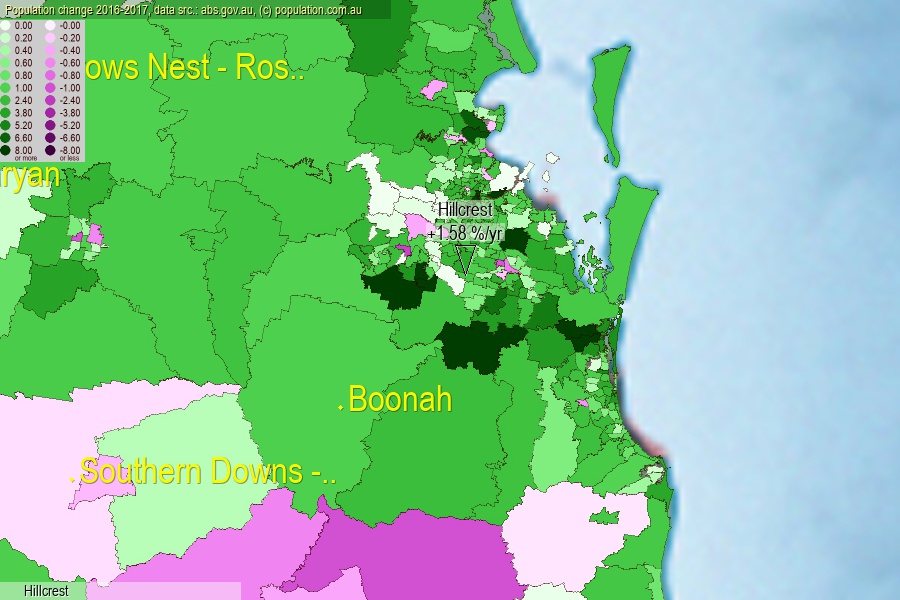 population.com.au
population.com.auLast official estimated population of Hillcrest (as Statistical Area Level 2) was 8 591 people (on 2017-06-30)[2]. This was 0.03% of total Australian population and 0.172% of QLD population. Area of Hillcrest is 9.40 km², in this year population density was 913.94 p/km² . If population growth rate would be same as in period 2016-2017 (+1.58%/yr), Hillcrest population in 2025 would be 9 742. [0]



Click to enlarge. Hillcrest is located in the center of the images.
Population [people], population density [p./km²] and population change [%/year] [2]
View borders » (new window) [4]
[1991-1992] +2.54 %/Yr.
[1992-1993] +2.05 %/Yr.
[1993-1994] +2.65 %/Yr.
[1994-1995] +3.06 %/Yr.
[1995-1996] +1.07 %/Yr.
[1996-1997] +2.30 %/Yr.
[1997-1998] +0.46 %/Yr.
[1998-1999] +1.24 %/Yr.
[1999-2000] +1.95 %/Yr.
[2000-2001] +1.90 %/Yr.
[2001-2002] +0.43 %/Yr.
[2002-2003] +0.98 %/Yr.
[2003-2004] +0.94 %/Yr.
[2004-2005] -0.44 %/Yr.
[2005-2006] -0.22 %/Yr.
[2006-2007] +2.22 %/Yr.
[2007-2008] +1.04 %/Yr.
[2008-2009] +1.97 %/Yr.
[2009-2010] +1.67 %/Yr.
[2010-2011] +3.15 %/Yr.
[2011-2012] +0.79 %/Yr.
[2012-2013] +2.24 %/Yr.
[2013-2014] +1.56 %/Yr.
[2014-2015] +0.61 %/Yr.
[2015-2016] +0.15 %/Yr.
[2016-2017] +1.58 %/Yr.
[0] Calculated with linear interpolation from officially estimated population
[1] Read more about SA2 and Australian Statistical Geography Standard (ASGS) on abs.gov.au
[2] Population data from Australian Bureau of Statistics (Population and density: 2017; change: 2016-2017)
[3] Digital Boundaries: Australian Statistical Geography Standard (ASGS) 2016.
[4] Border coordinates are simplifyed using Ramer-Douglas-Peucker algorithm.